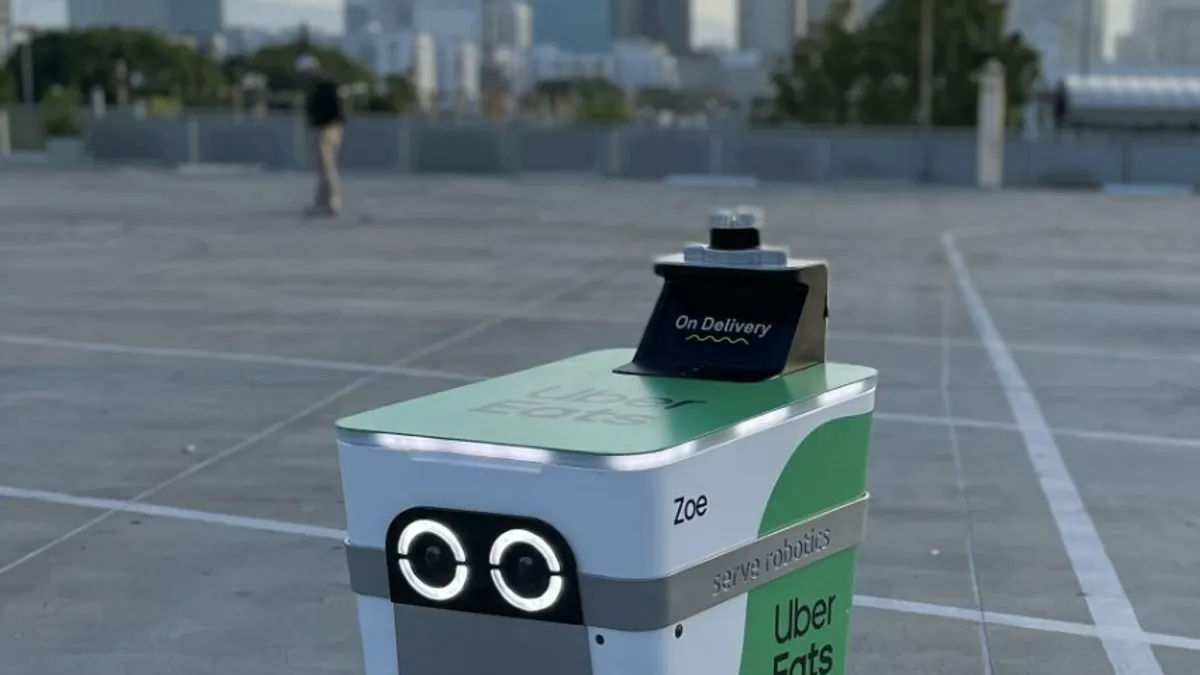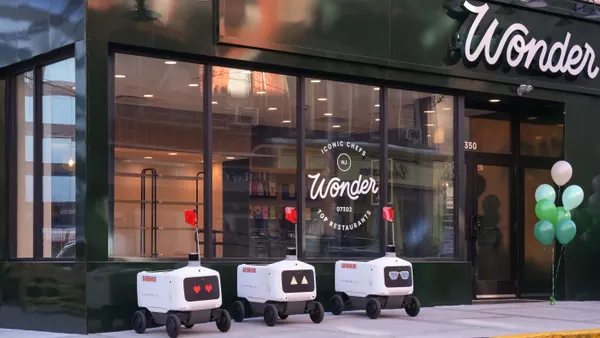Serve Robotics raised $30 million and became a public company through a reverse merger with Patricia Acquisition Corp. on July 31.
This financing will help Serve enter new markets and scale up its deployment, pursuant to an agreement to deploy up to 2,000 delivery bots with Uber Eats, Serve Robotics CEO Ali Kashani said.
According to an 8-K filed with the Securities and Exchange Commission, “Serve’s current fleet consists of over 100 robots,” and the company has “platform-level integrations with Uber Eats and 7-Eleven, Inc. and have successfully conducted pilots for Walmart and a major pizza quick service restaurant.”
Serve has already achieved significant growth in delivery, with 30% month-to-month increases in food delivery orders completed by Serve robots, Kashani said. He declined to share details about current order volume, however.
The financing round brings Serve’s total funding since 2021 to $56 million, and builds on Serve’s close relationship with Uber Eats. Uber participated in the investment, and Uber Vice President of Delivery and Head of Americas Sarfraz Maredia joined the robotics’ company’s board on July 31. Existing investors NVIDIA and Wavemaker Partners also contributed to the financing, as well as new investors Mark Tompkins and Republic Deal Room.
Using a reverse merger to enter the public market could help Serve attract further investments, too. This strategy, Kashani said, is cheaper and faster than an IPO and gives Serve quicker access to capital than if it had remained private. Since the deal, Serve has sold 3,720,339 shares to investors, raising $14.1 million, which was included in the $30 million funding total, he said.
Serve plans to shake up delivery economics
Delivery robots’ most significant value proposition is their potential to optimize last-mile delivery.
“It's long overdue for us to bring some level of efficiency and autonomy to last mile,” Kashani said.
Kashani said the platform has made huge strides since testing began back when Serve was a division of Postmates in 2017. Serve spun off from Postmates in 2021, after Uber acquired Postmates.
“Six years ago, when we first made a prototype, we had wheels coming off the robots, when it was out there,” Kashani said. Now, Serve’s robots have a 99.9% order completion rate, higher than any other delivery modality, , Kashani said.
Improvements in artificial intelligence have made robots more attractive in delivery by increasing their ability to interpret and navigate the physical world, he said.
“Robots are really just a physical manifestation of AI,” Kashani said. “We obviously use a lot of deep learning to help the robot understand what surfaces it can navigate on, or what surfaces to avoid, what's happening at an intersection. It could even identify, say pedestrians and other road users and make sure it navigates safely around them.”
In addition to reliability and cost savings, Serve says robots offer more monetization opportunities in the delivery process as brands can advertise on the robots (something aggregators typically can’t do with courier-owned vehicles). Last-mile food delivery, the company noted in its 8-K, has been historically unprofitable for third-party aggregators.
“They also make money through out-of-home advertising, just like on a bus,” Kashani said. “So we are impacting the economics of the day in two directions. One is [reducing] the cost and the other one is to increase monetization.”
Kashani said the company is planning to bring its robots to a number of markets, including Dallas and the Bay Area, but the final list of target markets for its Uber partnership is still incomplete.












